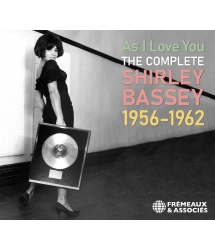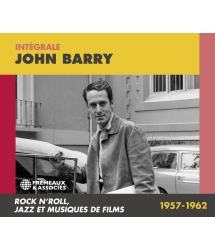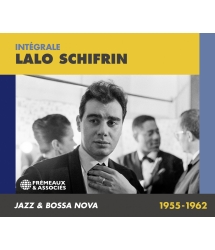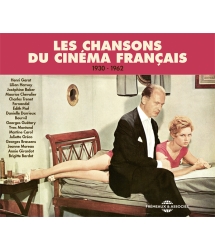- Our Catalog
- Philosophy
- Philosophers of the 20th century and today
- History of Philosophy (PUF)
- Counter-History and Brief Encyclopedia by Michel Onfray
- The philosophical work explained by Luc Ferry
- Ancient thought
- Thinkers of yesterday as seen by the philosophers of today
- Historical philosophical texts interpreted by great actors
- History
- Books (in French)
- Social science
- Historical words
- Audiobooks & Literature
- Our Catalog
- Jazz
- Blues
- Rock - Country - Cajun
- French song
- World music
- Africa
- France
- Québec / Canada
- Hawaï
- West Indies
- Caribbean
- Cuba & Afro-cubain
- Mexico
- South America
- Tango
- Brazil
- Tzigane / Gypsy
- Fado / Portugal
- Flamenco / Spain
- Yiddish / Israel
- China
- Tibet / Nepal
- Asia
- Indian Ocean / Madagascar
- Japan
- Indonesia
- Oceania
- India
- Bangladesh
- USSR / Communist songs
- World music / Miscellaneous
- Classical music
- Composers - Movie Soundtracks
- Sounds of nature
- Our Catalog
- Youth
- Philosophy
- News
- How to order ?
- Receive the catalog
- Manifesto
- Dictionnary











- Our Catalog
- Philosophy
- Philosophers of the 20th century and today
- History of Philosophy (PUF)
- Counter-History and Brief Encyclopedia by Michel Onfray
- The philosophical work explained by Luc Ferry
- Ancient thought
- Thinkers of yesterday as seen by the philosophers of today
- Historical philosophical texts interpreted by great actors
- History
- Books (in French)
- Social science
- Historical words
- Audiobooks & Literature
- Our Catalog
- Jazz
- Blues
- Rock - Country - Cajun
- French song
- World music
- Africa
- France
- Québec / Canada
- Hawaï
- West Indies
- Caribbean
- Cuba & Afro-cubain
- Mexico
- South America
- Tango
- Brazil
- Tzigane / Gypsy
- Fado / Portugal
- Flamenco / Spain
- Yiddish / Israel
- China
- Tibet / Nepal
- Asia
- Indian Ocean / Madagascar
- Japan
- Indonesia
- Oceania
- India
- Bangladesh
- USSR / Communist songs
- World music / Miscellaneous
- Classical music
- Composers - Movie Soundtracks
- Sounds of nature
- Our Catalog
- Youth
- Philosophy
- News
- How to order ?
- Receive the catalog
- Manifesto
- Dictionnary
CLAUDE BOLLING - ALAIN DELON - JACQUES DERAY
Ref.: FA519
EAN : 3448960251921
Artistic Direction : STEPHANE LEROUGE
Label : Frémeaux & Associés
Total duration of the pack : 1 hours 17 minutes
Nbre. CD : 1
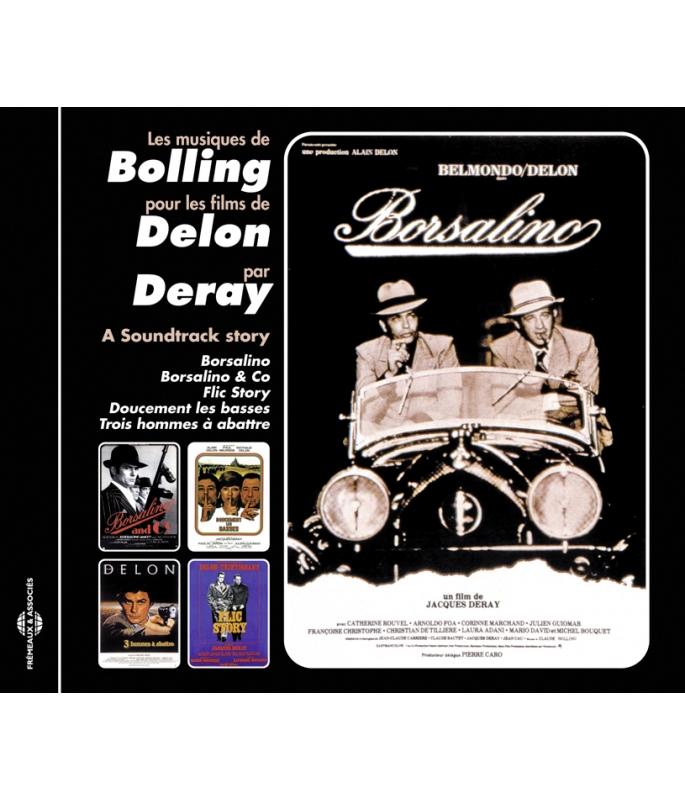
CLAUDE BOLLING - ALAIN DELON - JACQUES DERAY
CLAUDE BOLLING - ALAIN DELON - JACQUES DERAY
Frémeaux & Associés delivers the anthology of the soundtracks composed by Claude Bolling for the Alain Delon - Jacques Deray movies. Presented by Stephane Lerouge in a 16 pages booklet. “In 1969, Borsalino was my first great film as a producer and I met Claude Bolling. For me, that memory is unforgettable. Because the music brought as much to the film, as the film did to the music. Even today, no matter where I go, whatever the country, there’s always a piano or an orchestra that plays the Borsalino theme! In other words, my dear Claude, Borsalino and your music have made us both immortal... and they will survive us!” Alain DELON
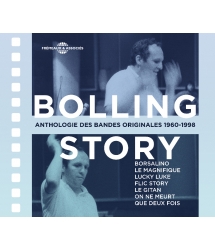
ANTHOLOGIE DES BANDES ORIGINALES 1960-1998
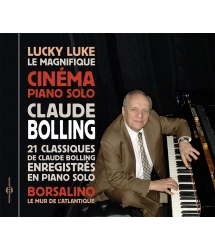
CLAUDE BOLLING(Borsalino, le magnifique...)
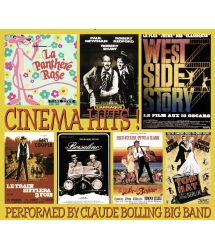
CLAUDE BOLLING BIG BAND
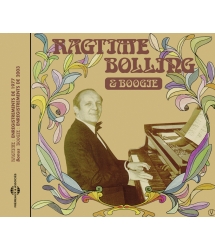
CLAUDE BOLLING
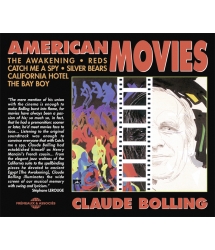
THE AWAKENING, CATCH ME A SPY, SILVER BEARS, REDS,...
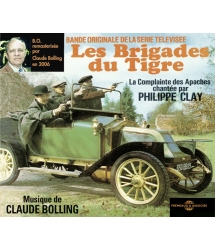
CLAUDE BOLLING






-
PisteTitleMain artistAutorDurationRegistered in
-
1ThèmeBolling Claude00:02:211970
-
2Arts décoBolling Claude00:02:261970
-
3La planqueBolling Claude00:02:431970
-
4La réussiteBolling Claude00:02:211970
-
5EscaladeBolling Claude00:01:461970
-
6Tango marseillaisBolling Claude00:03:291970
-
7Les rosesBolling Claude00:01:571970
-
8Prends-moi matelotBolling ClaudeDeray Jacques00:02:541970
-
9GénériqueBolling Claude00:01:511970
-
10Lola tangoBolling Claude00:02:561970
-
11Les annees follesBolling Claude00:02:461970
-
12ExoticanaBolling Claude00:01:591970
-
13Borsalino bluesBolling Claude00:04:001970
-
14Mélodie du rêveBolling Claude00:03:361971
-
15Le ventBolling Claude00:03:331971
-
16Doucement les bassesBolling Claude00:03:551971
-
17Happy nightBolling Claude00:03:091971
-
18FernandBolling Claude00:03:051974
-
19Roch attaqueBolling Claude00:01:581974
-
20Flic storyBolling Claude00:02:211975
-
21Paris rétroBolling Claude00:02:501975
-
22Générique 2Bolling Claude00:02:551980
-
23MenaceBolling Claude00:03:491980
-
24Poursuites voituresBolling Claude00:03:011980
-
25BéaBolling Claude00:02:381980
-
26Il pleut toujours quelque partBolling Claude00:02:221969
-
27Borsalino medleyBolling Claude00:04:551972
Bolling - Borsalino
Les musiques de Bolling pour les films de Delon mis en scène par Deray
A Soundtrack story
Borsalino
Borsalino & Co
Flic Story
Doucement les basses
Trois hommes à abattre
Introduction
En 1969, leur face à face est l’un des évènements majeurs de la saison cinématographique. Un même film réunit, au faîte de leur popularité, Jean-Paul Belmondo et Alain Delon. Son titre : Borsalino*. Son réalisateur : Jacques Deray, dont Delon a fait la connaissance un an plus tôt à l’occasion de La Piscine. Avec la précision nerveuse propre à son metteur en scène, Borsalino relate l’ascension de deux truands, Cappela et Siffredi, déterminés à se hisser en haut de la pègre marseillaise des années vingt. La caméra de Deray scelle leur amitié, consolidée par les obstacles parsemant les chemins de la réussite, jusqu’à l’issue de l’aventure, douloureuse et tragique. Pour Jacques Deray, Borsalino marque également le début d’une longue et fructueuse collaboration avec le compositeur qui, d’évidence, a su le mieux comprendre son univers de l’intérieur : Claude Bolling. “Bien avant de le rencontrer, se souvenait Deray, j’avais déjà en tête l’idée de travailler avec lui. C’est Gérard Beytout, producteur de La Piscine et ancien camarade de collège de Claude, qui m’a soufflé son nom pour Borsalino. A l’époque, Claude n’avait pas encore écrit de partition à couleur rétro. Mais, instinctivement, je sentais qu’il serait à l’aise dans ce climat. Je lui ai donc parlé de ce qu’allait être le film. Sur le champ, Claude m’a fait écouter un thème enlevé et nostalgique, interprété au piano bastringue. C’était exactement ce que je cherchais ! Autrement dit, nous avons trouvé le thème de Borsalino comme ça, en un clin d’œil ! Du coup, j’ai pu tourner en diffusant la musique de Claude sur le plateau, pendant les scènes non dialoguées, en l’intégrant à la base comme un élément de mise en scène.” “Le thème qui a accroché l’oreille de Jacques Deray s’intitulait Il pleut toujours quelque part, complète Claude Bolling. Je l’avais enregistré courant 1969 pour un disque de jingle-piano, appellation anglo-saxonne du piano punaisé. Dans la version originale, les quatre mesures de silence entre les phrases étaient destinées aux sons de l’appareil du percussionniste Vincent Geminiani, la Brontë, instrument invraisemblable constitué d’une plaque de tôle, utilisée au XIXème siècle pour produire les effets de tonnerre dans les pièces d’Emily Brontë. Pour dissuader Deray d’employer un thème préexistant, je lui ai écrit une proposition alternative, La Réussite. Sa réaction a été sans appel : «Très bien également… Je l’utiliserai… mais je garde le premier !» (rires)”
Très vite, Claude Bolling se trouve confronté à un problème bien défini : quelle musique écrire pour un film se déroulant dans le milieu marseillais des années folles ? “C’est vrai, avoue-t-il, le premier Borsalino, tout comme sa suite, Borsalino and Co, étaient de vrais challenges musicaux. Dès le départ, j’ai convaincu Jacques Deray et Alain Delon d’opter pour une musique originale évoquant les années vingt-trente, plutôt que de reprendre des succès d’alors. A moi d’éviter de faire du «faux-vieux»... en étant dans l’esprit de l’époque mais avec un regard, une sensibilité d’aujourd’hui. Je me suis donc appliqué à trouver une écriture moderne à l’intérieur d’un parfum rétro !” D’où, à l’arrivée, deux partitions qui, tangos, chansons réalistes et valses viennoises à l’appui, réinventent l’ambiance d’une époque, sans pour autant trahir l’évolution du langage musical. Pour Bolling (né en 1930) et Deray (né en 1929), c’est aussi une manière de ressusciter les musiques populaires de leur enfance… Et puis, malgré quelques thèmes dramatiques (Escalade, Roch attaque...), les bandes originales des Borsalino refusent clairement un parti pris de noirceur. “Là aussi, commente Claude Bolling, ma démarche était claire : je ne voulais pas surenchérir dans la dimension sombre, inquiétante des intrigues. Au contraire, le côté spirituel de La Réussite ou du Thème Borsalino apporte une légèreté en contrepoint avec la violence des personnages ou des situations…”
Dès sa sortie, en mars 1970, Borsalino confirme la vieille théorie selon laquelle une bonne musique de film existe avec et sans les images. Grâce à la radio et à la télévision (où il va souvent servir d’indicatif), le thème du film suscite un incroyable engouement, acquiert aussitôt le statut de standard, laissant croire à certains décideurs que Claude Bolling est dès lors «le» spécialiste musical du rétro. Ce qui, par ailleurs, lui permettra de creuser brillamment ce type d’inspiration avec des séries télévisées comme Les Brigades du Tigre, Claudine ou La Garçonne. Si Borsalino impose Bolling comme un compositeur pour l’image de premier plan, le film jette également les fondations de son entente créatrice avec Jacques Deray et Alain Delon. “Pour un musicien, insiste Claude, il est passionnant de suivre l’évolution d’un comédien sur la longueur, en trouvant une couleur orchestrale propre à chaque nouveau projet, à chaque nouveau personnage. En l’occurrence, notre trio avec Jacques et Alain s’est reformé sur Doucement les basses, étonnante incursion de Jacques sur les sentiers de la comédie. Le contraste avec Borsalino était radical : Delon incarnait le prêtre d’une petite paroisse du Finistère qui, brusquement, se trouve confronté au problème du mariage. Plutôt que de souligner les gags ou effets comiques, j’ai préféré élargir le propos du film avec une musique à caractère religieux, imprégnée de mysticisme : la Toccata (magistralement interprétée par Raphaël Tambieff aux grandes orgues de l’église Saint-Eustache), la Mélodie du rêve à coloration baroque, le final pop (Happy night) ou encore Le Vent, sorte de «poème vocal jazz», évoquant le dieu Eole sur la lande bretonne.” “Doucement les basses est un film qui échappe à la logique et à la réalité, aimait rappeler Jacques Deray. Quand je le revois aujourd’hui, j’y prends un réel plaisir, le considérant comme un spectacle, une comédie épique, drôle, étrange. Mais je me suis sans doute trompé quelque part…”
En 1975, ce sera le mémorable Flic story, objectivement l’un des opus majeurs de Jacques Deray, adapté du best-seller de Roger Borniche. “Dès que j’ai découvert les premières images du film, se souvient Claude Bolling, j’ai été frappé par la force du sujet et de son traitement : un polar sans fioritures, à la mise en scène acérée, bâti sur l’opiniâtreté de Borniche-Delon traquant impitoyablement l’ennemi public numéro un, Buisson-Trintignant. La partition reflète la grisaille du Paris pluvieux de l’après-guerre, utilisant le timbre populaire de l’accordéon, dans un registre un peu mystérieux. C’est vraiment la musique qui est sortie spontanément de moi à l’issue de la projection de travail… J’ai traduit au clavier les impressions que le film m’avait communiquées. Un responsable de la production a simplement relevé, non sans humour, que les trois premières notes du thème de Flic story étaient celles de Borsalino… mais à l’envers !” Le cinquième et ultime jalon de la collaboration tripartite Deray-Delon-Bolling s’intitule Trois hommes à abattre, unique polar contemporain du trio. “Il ne s’agit pas d’une enquête policière traditionnelle, aimait préciser le cinéaste. Un automobiliste devient un témoin gênant parce qu’il ramasse un blessé sur la route. En agissant ainsi, il devient la proie de tueurs et doit défendre sa peau.” Le sujet de Trois hommes à abattre (le destin qui s’empare d’un homme ordinaire) va déclencher chez Claude Bolling l’une des œuvres les plus ambitieuses et iconoclastes de son parcours cinématographique. “C’est vrai, confirme-t-il, c’est une partition qui casse le moule, qui va à l’encontre de ce que l’on peut imaginer a priori sur un thriller moderne et urbain. En l’occurrence, je me suis orienté vers une écriture à caractère néo-classique, presque mahlérienne, au lyrisme grave et douloureux. Jacques a été séduit, avec un bémol pour le morceau destiné à la séquence de poursuite des voitures : en l’occurrence, le mouvement des véhicules m’avait évoqué une fugue. Mais une fugue d’aujourd’hui, avec un traitement harmonique qui ne soit pas nécessairement celui du baroque. Deray était à la fois enthousiaste et déconcerté : même s’il aimait la fugue, il l’a sucrée au mixage au profit des bruits de moteur. C’est vraiment dommage car la forme même de la fugue est l’incarnation de l’engrenage qui happe Delon dans le film... et conférait à la séquence une dimension supérieure. Ce type de dissension est inévitable sur une collaboration aussi longue : avec Jacques, on s’est beaucoup apprécié, souvent compris, malgré deux ou trois gros orages. Il était attentif à la musique et, en même temps, elle l’effrayait : il avait le sentiment qu’un élément de mise en scène lui échappait. Mon rôle était de l’écouter, de l’accoucher, de cerner son attente… et de lui faire des propositions en conséquence.” “Claude et moi formons un vieux couple, résumait Deray. Vous imaginez : il m’a écrit treize partitions pour le cinéma et la télévision. Je suis le cinéaste pour lequel il a le plus noirci de papier à musique. A vrai dire, l’éventail de ses possibilités représente une chance inespérée pour un metteur en scène. Ecoutez par exemple les musiques de Doucement les basses et Trois hommes à abattre. Dans l’esprit, elles n’ont rien à voir entre elles et pourtant les points communs ne manquent pas : même compositeur, même vedette, même cinéaste. En trente ans, Claude ne m’a jamais obligé à sortir de mon univers. Au contraire, il s’est toujours intégré au mien, en l’enrichissant de sa sensibilité, de ses émotions, de son propre éclairage. Il nous reste le souvenir de grandes batailles partagées et quelques thèmes incontournables comme Flic story, l’un de mes favoris, car il possède la force de la simplicité et du dépouillement.”
Stéphane Lerouge
© 2010 Frémeaux & Associés
“En 1969, pour Borsalino, pour premier grand film comme producteur, j’ai rencontré Claude Bolling. C’est, pour moi, un souvenir impérissable. Car la musique a autant apporté au film que le film à la musique. Aujourd’hui encore, quel que soit le pays dans lequel j’arrive, il se trouve toujours un piano ou un orchestre pour attaquer le thème de Borsalino ! Autrement dit, mon cher Claude, Borsalino et ta musique nous ont immortalisés... et nous survivront !”
Alain Delon
English notes
Introduction
Their 1969 confrontation was one of the major events in the film-world that year: at the height of their popularity, Jean-Paul Belmondo and Alain Delon were facing each other on the set of one and the same film, Borsalino. Its director was Jacques Deray, with whom Delon had first worked the previous year on the film La Piscine. With the edgy precision that became Deray’s trademark, Borsalino portrayed the rise of two Twenties’ hoodlums named Cappela and Siffredi who were determined to make a name for themselves in the Marseilles underworld. Deray’s cameras put the seal on the latter pair’s friendship, one made even stronger by the obstacles they encountered on their road to fame right up to the final outcome of their painful, tragic adventure. Concerning the film’s director, Borsalino also marked the beginning of his long and productive association with the musician who, quite obviously, best understood the inner workings of the Deray universe: composer Claude Bolling. “Even before I met him”, remembered Deray, “I’d already thought of working with him. It was Gérard Beytout, an old school-friend of his who produced La Piscine, who whispered Claude’s name to me for Borsalino. Claude had never written a score with a retro feel before. But I just knew from instinct that he’d be comfortable with that kind of atmosphere. So, I had a talk with him, about what the film was going to be, and right there and then, Claude played a lively piece for me on a honky-tonk piano, full of nostalgia. It was just what I was looking for! In other words, we’d found the Borsalino theme, just like that, in the blink of an eye! It meant I could start filming with Claude’s music playing on the set for all the scenes where there wasn’t any dialogue: I could integrate it into the film like an element in the directing”. According to Claude Bolling: “The piece that caught Deray’s ear was called Il pleut toujours quelque part, a tune I’d done some time in 1969 for a tack-piano record. In the original, the four-bar silences between phrases were meant for the instrument that percussionist Vincent Geminiani played: it was called a Brontë, an incredible instrument made from a sheet of metal; they used it in the 19th century for sound-effects, like thunder in Emily Brontë’s plays. I didn’t want Deray to use a piece that already existed, so I wrote him another one called La Réussite. There was no appealing his decision; he said: ‘That’s very good, too; I’ll use it! But I’m keeping the first one!” (Laughter.)
Right from the outset, Claude Bolling found himself in a quandary: what kind of music should he be writing for a film set in the Marseilles milieu during the roaring Twenties? “Clearly,” he confesses, “the first Borsalino, just like the sequel, Borsalino and Co., was a musical challenge. Right from the beginning, I convinced Jacques Deray and Alain Delon to go for an original score that recalled the Twenties and Thirties, instead of using hits from the period. What I then had to do was avoid writing fake ‘old music’: I had to keep the period-feel, but look at it with a contemporary eye using today’s approach. So I got down to finding a modern writing-style that had a retro flavour inside!” In the end there were two scores, with tangos, Realist songs and waltzes from Vienna that reinvented the atmosphere of a whole era without betraying the way the musical language had evolved. For both Bolling (born in 1930) and Deray (born in 1929), it was also a way of resuscitating the popular music of their childhood... Again, the original scores for the Borsalino films (apart from dramatic themes like Escalade or Roch attaque) deliberately refuted any possible accusations of “darkness”. “My intentions there were quite clear, too,” says Bolling. “I didn’t want to ‘up the ante’ regarding the dark, troubling dimensions of the plot. On the contrary, the tongue-in-cheek side of La Réussite or Thème Borsalino brings a light feel that comes in counterpoint to the violence inside the characters and situations...”
Right from day one of its release, in March 1970, Borsalino confirmed an old saying: good film-music exists both with and without the film’s pictures. Thanks to radio and television (where its music would often serve as a signature-tune), the film’s main-title aroused incredible enthusiasm and became an ‘instant classic’, leading some of the powers-that-be to catalogue Bolling as “the retro-thriller specialist”. One aspect of this was that it allowed him to drill brilliantly deeper into this vein of inspiration when writing for television serials such as the Brigades du Tigre, Claudine or La Garçonne. If Borsalino indeed established Bolling as a first-rate film-composer, it also laid the foundations for the creative understanding that existed between himself, Jacques Deray and Alain Delon. “For a musician,” emphasizes Claude, “it’s a thrill to be able to observe the way an actor evolves over time, and find an orchestral colouring that suits each new project, each new character. In our case, our trio with Jacques and Alain got back together for Doucement les basses, which was Jacques’ astonishing foray into the world of comedy. It couldn’t have come in greater contrast to Borsalino: Delon played a priest — from a tiny parish in Brittany —who suddenly comes face to face with the issue of marriage. Rather than play on the gags and comic effects, I decided to widen the film’s scope with music that was not only religious but also full of mysticism: there’s the Toccata (wonderfully played by Raphaël Tambieff on the great organ in Saint-Eustache church), the baroque colour of Mélodie du rêve, a pop finale (Happy night), and even Le Vent, a kind of ‘vocal jazz poem’ that evokes the God Aeolus in the wilds of Brittany.” Jacques Deray liked to say that, “Doucement les basses is a film that escapes all logic and reality. When I watch it again today I can take real pleasure in it; I see it as a spectacular show, an epic comedy that’s both funny and strange. But probably I made a mistake in there somewhere...”
1975 was the year of the memorable film Flic story, adapted from Roger Borniche’s best-seller and, quite objectively, one of Jacques Deray’s best films. “As soon as I saw the first scene,” remembers Claude Bolling, “I was struck by how solid its subject-matter was, and the way it was treated: a no-frills detective-story with very sharp directing, based on the stubborn willpower shown by Borniche/Delon when he was hunting down the N°1 public enemy, Buisson/Trintignant. The score reflected the rainy greyness of post-war Paris, using the popular tones of an accordion in a rather mysterious register. That really was the music which sprang to mind when I came out of the projection-room... For the piano, I translated the impressions that the film had given me, and someone from the production department jokingly pointed out that the first three notes of the Flic story theme were actually the same as Borsalino… but played backwards!” The fifth (and final) chapter featuring the Deray-Delon-Bolling association was called Trois hommes à abattre (Three Men to Kill), the trio’s only contemporary thriller. According to the director, “It’s not a traditional police investigation. A car-driver becomes an embarrassing witness just by picking up somebody who’s been hurt. A single act makes him a prey for killers and he has to save his own skin.” The subject-matter for Trois hommes à abattre (i.e. destiny taking control over an ordinary mortal) led Claude Bolling to write one of the most ambitious, most iconoclastic works in his entire career in films. “It’s true,” he says, “it was a ground-breaking score that went against the trend of most people’s ideas on what a modern urban thriller should be like. I chose a neo-classical style in composing the music: almost like Mahler, with serious, aching lyricism. Jacques liked the whole score, although he did show some reserve about the piece I’d written for the car-chase: the way the cars moved made me think of a fugue... but a contemporary one where the harmonic treatment didn’t have to be baroque. Deray was enthusiastic but he found it disconcerting: he liked the fugue well enough but took it out of the final cut, leaving just the engine-noises. It was a real shame, because the very form of the fugue is an incarnation of the spiral Delon was caught up in. It gave the scene a higher dimension. Dissensions like that one are inevitable in any partnership as long as ours was; but Jacques and I had great respect for one another, and we always had a mutual understanding, even if there were two or three stormy moments in our relationship. Jacques was very attentive to the music, yet it frightened him at the same time: he had the feeling that he was missing something in his directing. My job was to listen to him, to discover what he was expecting, and then deliver the baby... by proposing music that would do just that.” Deray put it another way: “Claude and I were an old couple. Can you imagine? He wrote thirteen scores for me, both in films and television, which makes me the director for whom he wrote the most; that’s a huge amount of music-paper to scribble on. To tell the truth, the size of his potential was an unhoped-for chance for any filmmaker. Listen to the scores for Doucement les basses and Trois hommes à abattre, for instance. They’re as different as chalk and cheese, but they have so much in common: same composer, same star, same director. In thirty years, Claude never once caused me to set foot outside my universe; on the contrary, he always made a point of coming into my world, and he made it richer with his own sensibilities and emotions; he threw his own light onto it. What remains from that is our common memory of some great battles shared, and some classic, unavoidable tunes like Flic story; it’s one of my favourites, because it has the strength of simplicity and sobriety.”
Stéphane Lerouge
Translation: Martin Davies
© 2010 Frémeaux & Associés
“In 1969, Borsalino was my first great film as a producer and I met Claude Bolling. For me, that memory is unforgettable. Because the music brought as much to the film, as the film did to the music. Even today, no matter where I go, whatever the country, there’s always a piano or an orchestra that plays the Borsalino theme! In other words, my dear Claude, Borsalino and your music have made us both immortal... and they will survive us!”
Alain Delon
Borsalitno (1970)
01-Thème 2’21
02-Arts déco 1925 2’26
03-La planque 2’43
04-La réussite 2’21
05-Escalade 1’46
06-Tango marseillais 3’29
07-Les roses 1’57
08-Prends-moi matelot, par Michèle Bach 2’54 (Claude Bolling / Jacques Deray)
09-Générique 1’51
10-Lola tango 2’56
11-Les années folles 2’46
12-Exoticana 1’59
13-Borsalino blues 4’00
(P) 1970 Paramount Editions Famous Music (Sony-ATV Music Publishing) Titres 1, 3, 5, 7, 9, 11 et 13 : Editions Bleu, Blanc, Rouge Titre 8 : P 1974 Leda Avec l’aimable autorisation de Musiques & Solutions
Doucement les Basses (1971)
14-Mélodie du rêve 3’36
15-Le vent 3’33
16-Doucement les basses (toccata) 3’45
17-Happy night (générique fin) 3’09
(P) 1971 Leda Avec l’aimable autorisation de Musiques & Solutions Editions Adel Music
Solistes : Ghislaine de Saint-Barthélémy, voix Maurice Vander, orgue Hammond Raphaël Tambieff, grandes orgues de Saint-Eustache
Borsalino and Co (1974)
18-Fernand 3’05
19-Roch attaque 1’58
(P) 1974 Leda Avec l’aimable autorisation de Musiques & Solutions Editions Adel Music (18) Editions Bleu Blanc Rouge (19)
Flic Story (1975)
20-Flic story 2’21
21-Paris rétro 2’50
(P) 1975 Pema Music Sarl Editions Pema Music Sarl / Adel Music Soliste : Roland Romanelli, accordéon
Trois Hommes à Abattre (1980)
22-Générique 2’55
23-Menace 3’49
24-Poursuite voitures 3’01
25-Béa 2’38
(P) 1980 Leda Avec l’aimable autorisation de Musiques & Solutions Editions Adel Music
Titres bonus
26-Il pleut toujours quelque part / Borsalino thème 2’22
(P) 1969 Bleu Blanc Rouge Editions Bleu Blanc Rouge
27-Borsalino medley 4’55
(P) 1972 Claude Bolling Editions Famous Music / Bleu, Blanc, Rouge Photos et affiches : Collection Christophe L
CD Les musiques de Bolling pour les films de Delon mis en scène par Deray A Soundtrack story Borsalino Borsalino & Co Flic Story © Frémeaux & Associés (frémeaux, frémaux, frémau, frémaud, frémault, frémo, frémont, fermeaux, fremeaux, fremaux, fremau, fremaud, fremault, fremo, fremont, CD audio, 78 tours, disques anciens, CD à acheter, écouter des vieux enregistrements, albums, rééditions, anthologies ou intégrales sont disponibles sous forme de CD et par téléchargement.)
